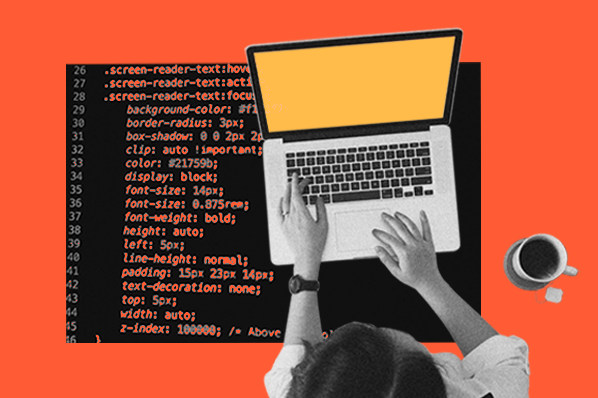Essential Elements of Responsive Web Design for Mobile Users
Essential Elements of Responsive Web Design for Mobile Users
Blog Article
A Comprehensive Guide to Crafting Visually Appealing and Functionally Durable Website Design Solutions
A comprehensive understanding of foundational style concepts, alongside a keen emphasis on customer experience, can substantially boost the effectiveness of web remedies. By leveraging elements such as color concept and receptive formats, developers are equipped to produce not just cosmetically pleasing interfaces however likewise ones that cultivate customer engagement.
Comprehending Style Concepts
Recognizing design principles is essential to producing reliable internet remedies that engage users and interact messages clearly. These concepts act as the structure for any kind of effective layout task, guiding the visual and functional aspects of a site. Secret style principles include balance, contrast, positioning, repeating, and distance, each playing a vital function in developing a natural and visually pleasing layout.
Balance involves distributing visual weight equally throughout a web page, making sure that no solitary component bewilders the others. Comparison enhances readability and accentuates vital functions, allowing individuals to browse the material effortlessly. Alignment develops order and company, leading the customer's eye in a rational flow. Repeating strengthens a constant visual language, reinforcing brand name identity and boosting customer experience with the interface. Lastly, distance teams relevant aspects, helping customers swiftly understand partnerships between different items of content.
Value of User Experience
Individual experience (UX) is critical in website design, as it straight influences how visitors communicate with a site and perceive its value. A properly designed website not only brings in users however also keeps them involved, inevitably resulting in greater conversion prices and customer fulfillment. UX encompasses various aspects, consisting of usability, ease of access, and the total visual allure of the site.

In addition, favorable individual experiences foster brand loyalty and encourage repeat visits. In contrast, an inadequate UX can damage a brand name's reputation and deter possible consumers. Investing in UX design is not just an aesthetic consideration; it is a tactical method that can considerably influence a service's bottom line. Ultimately, focusing on user experience in internet style is important for developing practical, engaging, and effective sites that fulfill the demands of modern individuals.
Shade Concept in Website Design
Shade concept plays a critical duty in website design, affecting not only the visual allure of a website but likewise the psychological reactions of its customers. hop over to here Understanding color characteristics is essential for producing an efficient customer experience. Shades can evoke certain sensations; as an example, blue typically shares trust and professionalism and trust, while red can infuse exhilaration or necessity.
When picking a color scheme, designers should take into consideration harmony and comparison. Corresponding colors can create vibrancy, while comparable shades use an even more serene feel. Making use of devices like shade wheels can help in identifying effective color combinations. Moreover, access must be prioritized; guaranteeing adequate contrast between text and background colors is important for readability.
Furthermore, social context plays a considerable role in color analysis. For circumstances, while white indicates pureness in Western cultures, it may stand for mourning in some Eastern societies - web design. Therefore, a thorough understanding of the audience is important when applying shade theory.
Incorporating color psychology into website design not only improves visual allure however also affects individual habits, guiding them towards desired activities. Eventually, a well-thought-out shade strategy can dramatically raise the general impact of an internet site.
Responsive and Flexible Designs
Along with color concept, the structure and format of a site considerably impact individual experience and engagement. web design. Responsive and flexible layouts are crucial techniques for making certain that sites operate efficiently throughout a wide variety of devices and display dimensions
Responsive layout employs liquid grids and flexible pictures, permitting the format to adjust flawlessly according to the viewport dimensions. This method makes certain a consistent user experience, as content reflows and resizes, keeping accessibility whether checked out on a smart device, address tablet, or desktop. Media inquiries play a crucial duty in receptive style by using different designs based upon the device's attributes.

Both techniques intend to improve individual experience by prioritizing usability and accessibility. Picking in between responsive and flexible formats mostly depends on task needs, target market, and wanted customer interactions, inevitably adding to additional reading the effectiveness of internet style services.
Screening and Optimization Methods
Examining and optimization methods are vital components of reliable website design, making sure that websites not just meet customer expectations however also execute effectively throughout different systems. These approaches incorporate a variety of techniques focused on evaluating usability, capability, and overall performance.
A/B screening is a foundational strategy, allowing designers to compare two variations of a web page to figure out which carries out much better in terms of individual involvement and conversion rates. Customer testing is similarly vital; it includes collecting feedback from genuine customers to identify pain points and locations for improvement. This qualitative data can assist layout adjustments that improve customer experience.
Furthermore, efficiency optimization strategies such as picture compression, code minification, and leveraging internet browser caching can significantly improve load times and responsiveness. Tools like Google PageSpeed Insights and GTmetrix provide important metrics for evaluating web site efficiency, allowing designers to make data-driven decisions.
Conclusion
Responsive formats contribute to a smooth individual experience across tools, even more promoting interaction. Ultimately, the application of these approaches not just boosts user contentment however also drives conversion prices, solidifying the value of an extensive layout framework.
Report this page